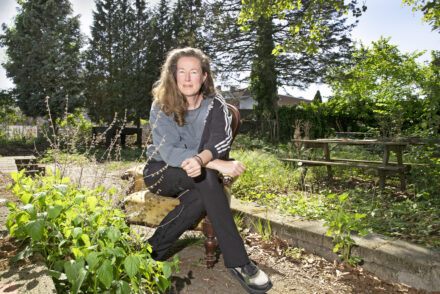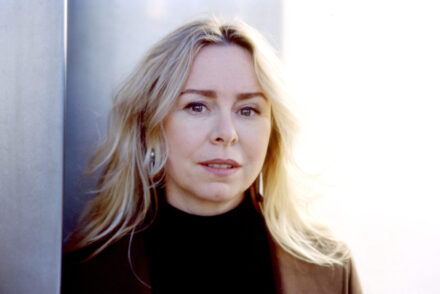Sixty years of Maranatha
In the Telling History section, we dive into Tilburg University’s rich Heritage Collections. This time Pieter Siebers, Academic Heritage Project Leader, talks about the history of the Maranatha Church.

This year marks the 60th anniversary of the founding of the student parish Maranatha, from which the current student church on Cobbenhagenlaan was born. In December, the parish—now also called Tilburg University Chaplaincy—organizes several programs, including “Christmas on Campus” on Tuesday, Dec. 20, and a midnight mass on the December 24.
Maranatha is a vibrant parish, but no longer as self-evident as it was in 1962, at a time when Catholicism was prominent in both academic life and everyday Brabant. While there were already signs of secularization, many students were still Catholic, not just in name. For students, the student chaplaincy existed from the beginning of the Roomsch Katholieke Handelshoogeschool, as the university was initially called in 1927. This was fulfilled by a so-called moderator, in practice, the spiritual counselor of T.S.C. Sint Olof, Tilburg’s only student association at the time, of which almost every student was a member.
The first moderator was Father Padberg, a Frisian monk of the Tilburg-based congregation of Mill Hill. At his farewell in 1934, he said of the students that they were “splendid fellows.” The docility when I disapproved of something or when I wanted something else was prompt, as far as I know.” That Padberg was far from knowing everything was also known to himself.
The parish
It was—despite the moderator’s words—the period when student docility declined, influenced by Catholic-critical magazines such as De Gemeenschap and Roeping that denounced, among other things, Roman Catholic triumphalism and the lack of contemporaneity. Although several cracks appeared in the Catholic stronghold, several student parishes emerged during and after World War II. These no longer focused exclusively on the student who was a member of a student association but also on the growing group of students who did not wish to become members of such an association, often mockingly referred to as nihilists.
In 1962, the then Bishop Bekkers of the Diocese of ‘s-Hertogenbosch deemed the time ripe for a student chaplaincy in Tilburg, with the prospect of its own building. The name of the new student parish became “RK Studentenparochie Wederkomst van Christus-Maranatha,” or “Maranatha” for short. That’s Aramaic—an ancient Middle Eastern language—for ” Oh Lord, come! The apostle Paul uses the term in his letters as a greeting, and Maranatha also appears in the closing passages of the Bible.
The first chaplain and “building chaplain” was Gérard Gelissen. The latter asked the Tilburg architect Jos. Bedaux, who had just before completed the main building of the university, to design the Maranatha complex. On February 25, 1966, president-curator Van Boven laid the foundation stone on the Professor Cobbenhagenlaan, in the vicinity of the then mensa and Sports Center, a cluster situated a few hundred meters from the campus.
Liberalism
The parish catered to the entire higher education system in Tilburg but soon faced exodus. Secularization among the student population took off, where political engagement and social involvement increased. In Maranatha’s program, this translated into activities such as “political-materialist Bible reading”. The university’s Steunfonds—which contributed significantly to its operations—gradually found it more difficult to put any more money into the student church, which attracted fewer and fewer students. In the early 1980s, after several conflicts, Maranatha even stood empty for almost two years.
The parish dissolved itself in 1983, followed by a restart in 1985 with the appointment of Pastor Hub Lenders. Maranatha began to function to a significant degree as the “house chapel” of the then flourishing, adjacent Tilburg Theological Faculty. A lively, liturgically liberal practice developed, with several chaplains. Disagreement about this arose, partly because the number of students attending the church was relatively small. Both the university and the Steunfonds decided to withdraw their contributions in 2007.
Life Questions
The issues led to the departure of the entire church administration in 2012 but were also the prelude to the, now second, relaunch of a student church that is attracting more and more international students. Among other things, the new Chaplain Michiel Peeters began English-language celebrations, which are well attended. Followership is no longer a motto. Today’s life questions take center stage: “What is the meaning of everything? In the end, what are you doing it all for? Understanding the other and society is only possible if your own life, in all its aspects, as ‘you’ —who and what you are, not just how you function and your results—are taken seriously.”
Translated by Language Center, Riet Bettonviel






